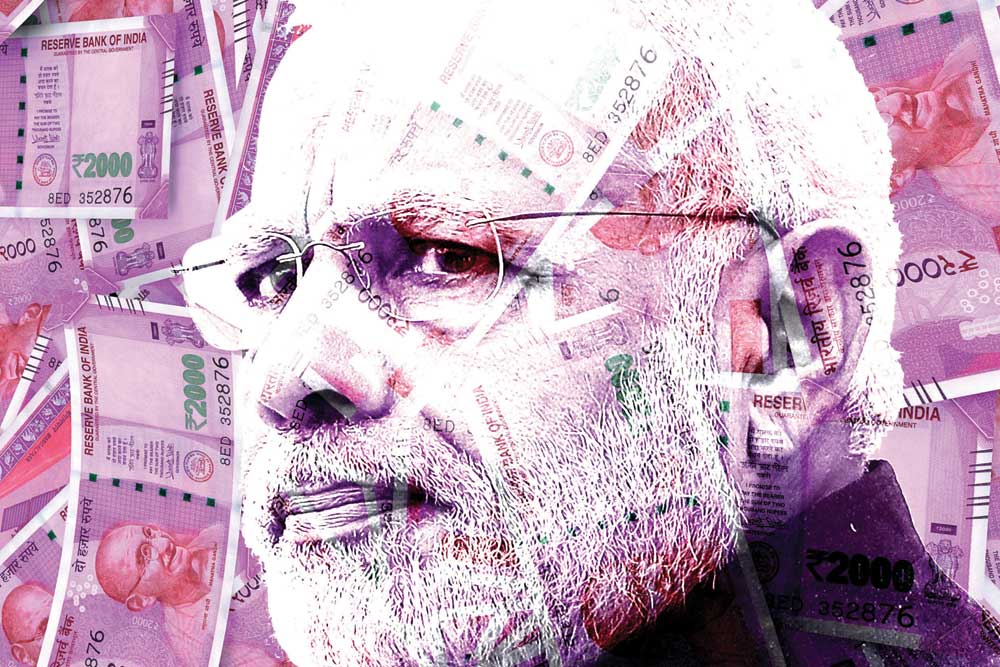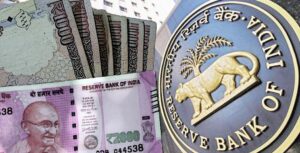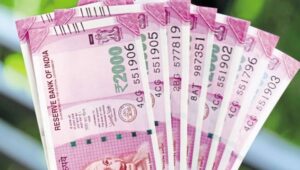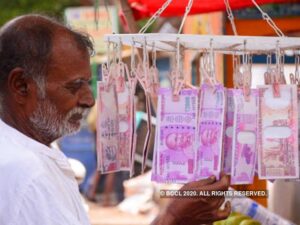On 26th August 2020, rumour mills started churning and social media messages of the Rs.2000 pink notes seeing the same fate as the old now invalid Rs.1000 & Rs.500 notes. However, authorities dismissed it.
The annual report of the RBI released on 25th August 2020- said the Rs 2000 denomination note, introduced during demonetisation in 2016, was not printed at all during 2019-2020.
This gave rise to speculations that the Rs.2000 notes might be phased out from our economy.
The number of Rs 2,000 currency notes in circulation has come down from 33,632 lakh pieces at the top of March 2018 to 27,398 lakh pieces at end of March 2020.
The Rs 2,000 notes constituted 2.4 % of the total volume of notes at End-March 2020, down from 3.3 % at End-March 2018.
On the other hand, the circulation of Rs. 500 and Rs. 200 notes has gone up noticably, both in terms of quantity and quality over the three years since 2018.
Banks are not reissuing Rs. 2000 notes and maybe it is because they don’t possess Rs.2000 notes either. Also it’s easy to regulate ATMs with currency notes that are of lesser denominations. Notes like Rs.200 and so are easy to get converted or what we call as exchangeable for change.
Around the world, there are not many countries that have notes with such high value.
The Federal Reserve Bank also said it’s undertaken several initiatives to introduce varnished banknotes in Rs 100 denomination on a field trial basis. However, the method of printing of those notes has been delayed thanks to disruptions caused by the COVID-19 pandemic and certain other developments.
FM Nirmala Sitharaman denies the phasing out of Rs.2000 notes. (Prior to the release of RBI annual reports)
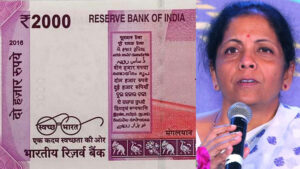 In the early months of 2020- setting speculations at rest about the fate of Rs 2,000 currency notes, Finance Minister Nirmala Sitharaman said that those notes are here to stay and that the banks haven’t been given any instructions either to withdraw or recalibrate their ATMs to end such high denomination notes gradually.
In the early months of 2020- setting speculations at rest about the fate of Rs 2,000 currency notes, Finance Minister Nirmala Sitharaman said that those notes are here to stay and that the banks haven’t been given any instructions either to withdraw or recalibrate their ATMs to end such high denomination notes gradually.
“The banks haven’t been given any such instructions as far as Rs 2,000 currency notes are concerned,” the Ministry of finance said.
Soon after its introduction, the highest denomination notes became the favourite currency for hoarders who stashed unaccounted cash. Last year, FM Nirmala Sitharaman had told Parliament that over 43% of unaccounted cash seized in the previous year were in the form of Rs 2,000 notes.
Majority of these notes were not in circulation given to the reports of them being hoarded.
Why is RBI not printing the Rs 2,000 notes?
India’s Central bank- Reserve Bank of India may either be holding back Rs 2,000 notes or could have stopped 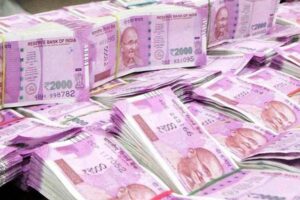 printing high denomination currency, according to a SBI research report (2017).
printing high denomination currency, according to a SBI research report (2017).
The reason could be that – the 2000 denomination currency led to challenges in transactions. Costumers would often return these pink notes for ‘change’ of smaller denominations.
Not many commodities fall under this amount bracket and even if it did, we prefer other odes of payment if it is of a greater value. Hence now, the RBI has started to print more notes of Rs.500 & Rs.200 and they have also increased in circulation.
It is not much of a secret that under the title of ‘Black money’ it is usually the notes with higher denomination like the previous Rs.1000 and now the Rs.2000 are hoarded.
Why Economists advocate demonetising the country’s highest valued note Rs.2000 ?
Financial Experts say- A good chunk of Rs 2,000 notes are actually not in circulation, having been hoarded. Rs 2,000 note, therefore, isn’t presently working as a currency of transaction. It can be demonetised, without causing any disruption.
The main purpose of Demonetisation was to bring out the black money back in circulation and hence put an end to corruption. It was also supposed to increase the tax revenue of our country.
Even after the ban of older notes (Rs.500 & Rs.1000), a high circulation of Rs 2,000 notes may defeat the government’s above mentioned objective as Rs 2,000 notes are easier to get used for illegal purposes such as smuggling and hoarding.
The government remains grappling with the difficulty of maintaining a balance between existing stocks and fresh printing of varied denominations of currency.
To further stress on it last year, unaccounted cash worth Rs 6 crore in Rs. 2,000 notes were recovered from the Andhra-Tamil Nadu border and a few more incidents like this prompted the government to take action on printing fresh notes as well as holding back its excess circulation.
Is the phasing out of a Paper currency, beneficial or not?
Paper currency has very distinct properties in comparison to other forms of currency. First, it’s precisely the existence of paper money that creates it difficult for central banks to require policy interest rates much below zero, a limitation that seems to have become increasingly relevant in the current economic period.
Paper currency facilitates making transactions anonymous, helping conceal activities from the govt during a way which may help agents avoid laws, regulations and taxes. This is an enormous difference from most sorts of electronic money that, in theory , are often traced by the govt . (With some exceptions of course like the bitcoins that are completely anonymous, yet they are tracked by Block chains- its very own parent technology).
Most probably, currency that is not held in the domestic legal economy or in the global economy is mainly held in the domestic underground economy. The underground economy is very vast and complicated filled with persons evading taxes, breaking laws and illegal regulations. The size of the underground economy is not known accurately or with any solid traceable proofs.
If a phase-out of paper money were simply met by an increased demand for electronic financial institution reserves, there would in fact be no significant loss.
But, exactly so because paper currency is anonymous, replacing it with non-anonymous electronic money would likely lead to a large shrinkage in demand, and Treasuries would have to absorb the loss.
If any country attempts to unilaterally reduce the utilization of its currency, there’s a risk that another country’s currency would be used within domestic borders. Even if that risk is not great for a developed country, developing countries may experience loss of revenue from foreign users of currency (many of whom may be engaged in underground or illegal activities within their own borders, even if not within their home country borders).
Thus, any attempt to eliminate large-denomination currency would ideally be taken up in an agreement that included at the very least the major global currencies or currencies of countries with emerging economy.
How are equity share markets likely to be affected by this news?
An advancement of doubt is always impacts the equity markets negatively.
Markets have reacted negatively to this latest news though part of this may be attributed to the fears induced by the fake news elevated by the Covid-19 pandemic.
Markets will recover within the medium term because the uncertainty eases out. While we must not ignore the probability of fall in a wider prospect, there will be some sectors that would feel the heat while some growing technology sectors related to fin-tech and e-commerce could gain – owing to consumers shift to electronic payments and digital cash reliance.
The long term outlook in the stock market remains positive.
In market value, the share has come down to 22.6 % at End-March 2020 from 37.3 % at the End-March 2018.
It was 50 % in 2017, as the major focus that year was on remonetising the economy.
Foreign exchange: Will the trade in the international market be affected if the Rs.2000 notes are completely phased out?
There could be some appreciation of the domestic currency in the forex markets (Foreign Exchange trade market where one currency can be purchased for another currency) as notes in circulation will decrease. 
Though the RBI will be monitoring and taking remedial action, negative impact on international trade cannot be ruled out at this point considering how the Rupee fell last time something very similar to the current probable situation took place.
However, security policies by the government are expected to ease this impact.
The Timely impact of Demonetisation (Ban & phase-out, both) on Economy of India:
Short term Impact: There will be a disruption in the current liquidity situation as households are likely to get affected by the note exchange and currency withdrawal terms laid by the government. However, if you check in your homes, Rs.2000 notes will be outnumbered by smaller value notes like Rs.500 or Rs.200.
Though clarity is unfolding on this, commodity transactions and general cash market transactions are likely to feel an instantaneous impact.
Unorganised sector proceedings including small trade market activities will remain unstable in the short term.
An insider rumour says that even banks have stopped giving out Rs.2000 notes owing to its shortage as they have not been printed in almost a year.
In the short term, we might feel the heat of it but it will be minute considering the term ‘phase-out’ means the process will be gradual and hence almost trivial.
Long term Impact: Complete elimination of a currency basically denotes a change in Financial system of any economy.
Nationally, there could be some turmoil as the effect will be disproportionately felt by the lower and upper income classes.
Globally, the government is likely to get a thumbs up for the move and more countries could potentially see this as a workable option to curb black money and curtail illegal financial activity.
Lastly, though this move by the government may not be a first (having already demonetised currencies before in the year 2016), such an action could achieve larger significance for a globally connected India as it shows boldness in tackling an issue which has remained a thorn in the growth success story of this generation or it could all go terribly haywire if the policies fail in implementation.
Ending in a positive note, there is a possibility of changes in the spending patterns as this move indirectly represents a substantial momentum towards a cashless economy we have been talking about for years.

